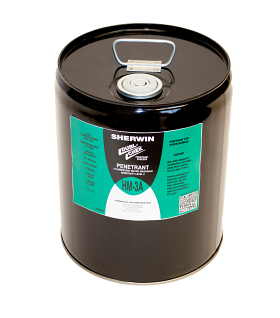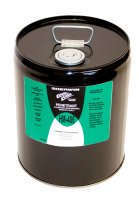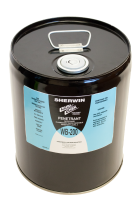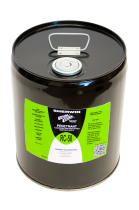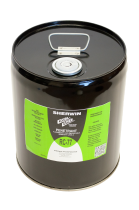Non Destructive Testing // Penetrant
- Low to near zero background for assured indication visibility
- Sharp, precise flaw indication for rapid interpretation
- Excellent electrostatic spray capability
- Long material tank life due to formula stability and non-volatility
- Low material consumption (low drag out) due to low viscosity
- Clean, oduorless product, vapor free atmosphere
Description
HM-3A is a level 2, Method A water washable fluorescent penetrant for inspecting castings, extrusions, and similar parts. HM-3A is a versatile, general-purpose penetrant for use on a variety of materials, including aluminum and magnesium. HM-3A has been used by aerospace, airframe, turbine engine, and missile manufacturers for over a decade.
Specifications Compliance
• QPL – Type 1, Method A, Level 2
• MIL-I-25135 Revisions C, D, & E
• ASME Code NDT, Sec
• Lockheed Martin
• MTU
• Boeing
• Rolls Royce
• SAE AMS 2644
• General Electric
Physical Properties
| Colour: | Green |
| Viscosity: | 6.46 cSt @ 1000F |
| Fluorescence: | Yellow/Green |
| Water Tolerance: | 15% |
| Flash Point: | 2200F (104.4°C) |
Directions
1. Application: Apply HM-3A only to clean, dry surfaces by spraying, flowing, brushing, or dipping.
2. Dwell Time: A 10-minute dwell time is suggested, although in many cases five minutes will suffice. When particularly tight cracks are suspected, or the part is especially critical, the dwell time may be extended to 30 minutes or longer. Allow the penetrant to drain from the part surface back into the penetrant tank to conserve material.
3. Removal:
a. Use ambient temperature water to rinse HM-3A from the part surface. To avoid washing entrapped penetrant from surface flaws, do not use high water pressure or temperatures, and avoid prolonged washing times.
b. Solvent Wipe Method – Remove as much excess penetrant as possible using a clean dry rag or towelling. Remove remaining penetrant film by wiping with a rag or toweling that has been slightly moistened with solvent. Use a minimum of solvent; avoid flushing penetrant from flaws. Do not spray solvent directly on the part surface when removing excess penetrant. Rough surfaces require a more generous application of solvent.
4. Drying: A re-circulating oven set no higher than 1600F (710C) is suggested. Leave the part in the oven just long enough to evaporate surface moisture. Drying is improved by using pressurized air to disperse and remove as much excess water as possible before placing the part into the oven.
5. Developing: Apply the developer by cloud dusting, spray, or dip using the appropriate developer. Flaw marks are visible under black light almost immediately but allow sufficient developing time to enhance the flaw visibility.
6. Inspection: Inspect parts under appropriate UV-A light intensity and minimal visible light.
Ordering Info
| Code | Packaging |
|---|---|
| 1544/39 | 3.8 litres (1 gallon) |
| 1544/51 | 18.9 litres (5 gallons) |
| 1544/64 | 208 litres (55 gallons) |

